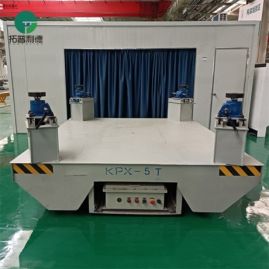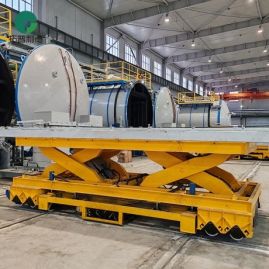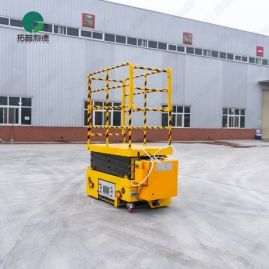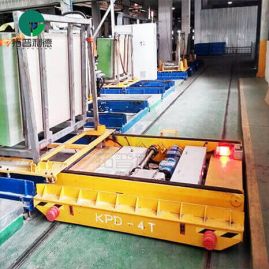What Are The Requirements For Electric Flat Cart Turns?
Electric flat carts, especially those used in industrial settings, may need to turn efficiently and safely. The requirements for electric flat carts to turn depend on various factors, including the design of the flat car, the nature of the track, and safety considerations. Here are some general requirements:
Track design:
Curve radius: The track should be designed with a curve with a radius suitable for the electric flat cart's turning ability. The curve radius is critical to preventing derailment and ensuring smooth turns.
Transition curves: Where possible, the track design can incorporate transition curves at the entrance and exit of turns. Transition curves help gradually change from a straight path to a curved path, thereby reducing the possibility of sudden jolts or shocks.
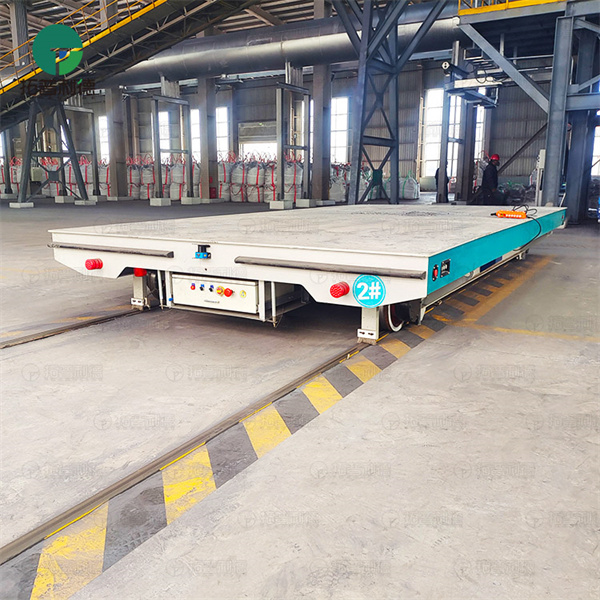
Wheelbase and steering mechanism:
Appropriate wheelbase: The wheelbase of the electric flat cart should be designed to handle turns without excessive stress on the wheels and tracks.
Steering mechanism: Some electric flat carts may be equipped with a steering mechanism that allows the wheels to adjust when turning. The design and operation of this mechanism should meet safety standards.
Speed control:
Speed limit: A speed limit should be set for turns, taking into account factors such as curve radius, load capacity, and the overall design of the electric flat cart. Excessive speed when turning can cause instability and derailment.
Load Distribution:
Even Load Distribution: The load on the electric flat cart should be evenly distributed to prevent tipping or tilting when turning. Proper load distribution is essential to maintain stability.
Safety Features:
Emergency Stop System: The electric flat cart should be equipped with an emergency stop system that can be activated if any problem is detected during turning.
Obstacle Detection: Systems that detect obstacles or irregularities on the track when turning can improve safety.
Operation Guidelines:
Operator Training: Electric flat cart operators should be trained on turning procedures, including recommended speeds, load considerations, and emergency protocols.
Turn Protocol: Clear guidelines for executing turns should be established, especially in areas where multiple flat carts may be operating.
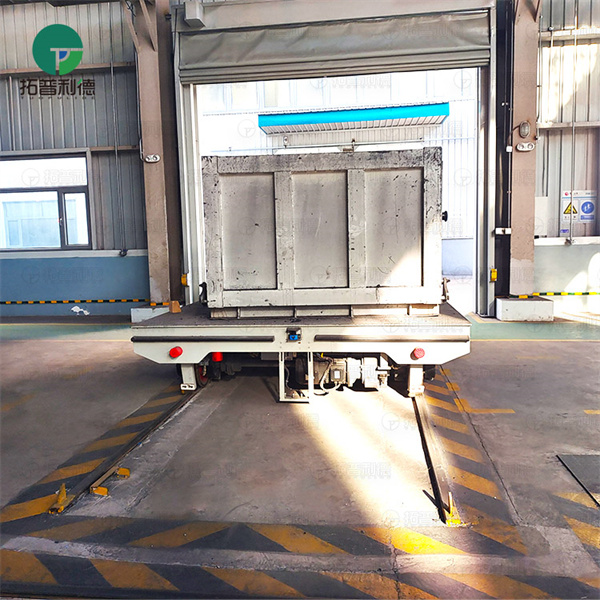
Maintenance and Inspection:
Regular Maintenance: Routine maintenance of the electric flat cart and track should be performed to detect and correct any problems that may affect turning performance.
Inspection Procedures: Regular inspections should be performed to ensure that the track, wheels, and steering mechanism are in good condition.
Compliance with Standards:
Compliance with Industry Standards: The design and operation of the electric flat cart and its turning capabilities should comply with relevant industry standards and regulations.
Testing:
Performance testing: Prior to deployment or after modification, electric flat carts should be performance tested to ensure they can safely turn at the specified speed and load.
It is important to note that specific requirements may vary by electric flat cart type, industry, and regional regulations. Hiring experienced professionals and adhering to relevant industry standards are essential to ensure that electric flat carts operate safely and effectively during turns.


